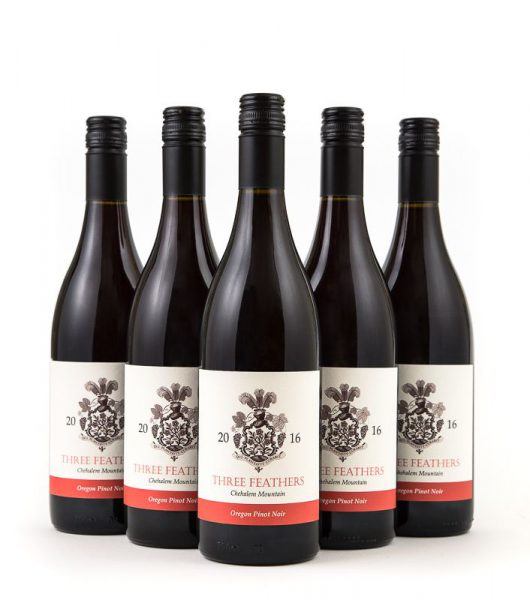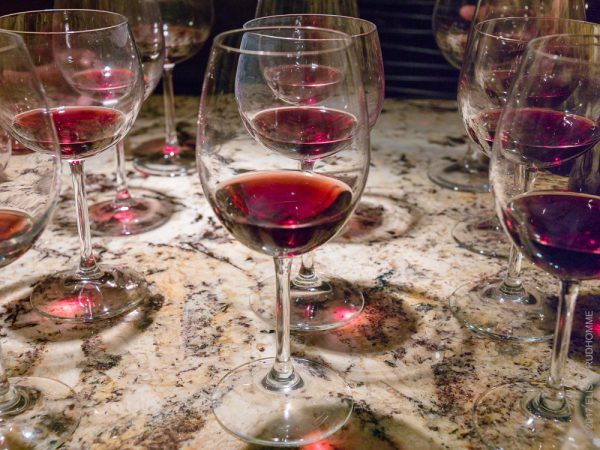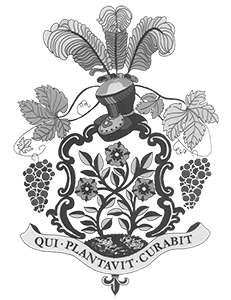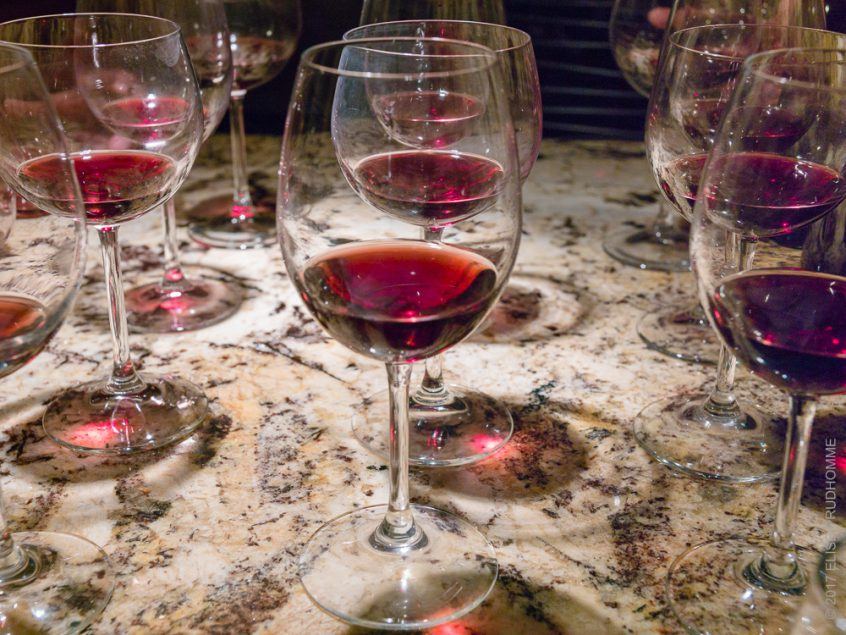
Wine Speak: Reviewing our 2016 Three Feathers Pinot Noir
Excerpt from an Interview with Winemaker Dan Duryee and Christine Stimac
December 15, 2017 – Saint Paul, Oregon
Christine Stimac : So Dan, what do you have to say about Three Feathers 2016 Pinot Noir? What do you think? What is your opinion from the winemaker’s point of view on how it tastes?
Dan Duryee : For color, obviously you’ve got more of that kind of brick red-orange hue. You can tell it’s a young wine because right at the top, you’ve got this tiny level of white or clear juice. You’ll notice as the wine ages – and there’s just a small line here – as the wine ages, that’s where you really start to notice the orange hues. So you can always tell if it’s a young wine or older wine by that top level in the glass.
I go from color into aromatics. Because we picked on the earlier side, you’re almost always going to have bright fruit aromatics such as these light cherry, raspberry and cranberry notes. There are sort of these lighter red-fruited notes in the wine, in the aromatics.
… Everything in the taste is from front-to-rear. Typically, you’ll get a sweeter wine that will give that impression up front: this is clearly a dry wine. I don’t get any RS (residual sugar); there was no RS managed in there and it didn’t have a lot of sugar to begin with so it was pretty easy for the yeast to eat that. A dry Pinot, which is what you would expect out of Pinot, I hope.
Stimac : Well, it’s not horribly dry.
Duryee : No, no… I think the beauty of Pinot is that you can make it dry because you don’t have this tannin profile. If you had a dry wine and you had this tannin profile it’d be more like Cab, you know, it would be just so grippy. The beauty of Pinot, that everybody loves Pinot for, is is that seamless elegance, that transition from the front of the palate to the rear of the palate. How does it travel through your mouth? This wine is so easy to drink – it’s extremely palatable. It is very much like a wine that I can see, you know, bottle number three with a group of folks.
For me, the thing I love about Pinot in general is the juicy quality of the acidity. You’ve got bright red fruit, you’ve got this really kind of seamless front-to-rear palate, your tannin structure is very elegant; velvety tannin structure, just really soft. But this wine, to me, it’s the acidity that speaks in this wine.
Stimac : Right, I agree.
Duryee : You get this acidic finish, but what it does to your mouth – it just, it causes your mouth to almost salivate – that juicy acidity is mouth watering to me.
Stimac : Well, it’s wonderful with food. I don’t think of it as a sipping wine.… We put a bunch of different things on our website, one of which is Victor’s Infallible Weber Smoked-Turkey and it’s very good with turkey.
Duryee : Love it! That’s what a juicy acidic wine is calling for. That salivating is screaming for some food. … I think that pairs well – that smokey character – with a juicy fruit-forward-style Pinot.
Stimac : Now that’s interesting because I’ve always noticed that about this wine. It really has great aroma and that’s the picking the earlier. So what happens if you wait longer and develop more sugars, does that smell go away?
Duryee : It doesn’t go away, it just evolves into a different spectrum of aromatics and almost always your wines will go from a light red-fruited spectrum into a darker, richer and then raisin fruit spectrum.
… So red-fruit spectrum, bright red-fruited characters; do you know what classic aromatic components are for your AVA? I’ve always had experience with Chehalem Mountain wines being more of this kind of color – more of that red brick. If you go down into the Eola hills, you get more of a plum darker color to the wines. A lot of that is soil characteristic. I think that Laurelwood soils are pretty classically more red-fruit spectrum-ed. That’s kind of what Robert (Parker) was saying in his article: Is it site specific? Is it AVA specific? Do these things fit with what a Chehalem Mountain Pinot Noir would look like?

… I think the thing that you’re going to start to see in these wines and the thing that I’ve started to notice even just first year to second year is that I’m picking up these hints of floral components. There’s a floral note that I really like, almost like a rose or something in those lines, where it’s going become not just fruit. As your root systems get down and get into that ground, they’re going to really start pulling out more characters that are less about photosynthesis and more about what it’s pulling from the ground. Especially for cooler sites, you really start to see what the land – the terroir – gives to the vines.
That’s a real wonderful French term, but it’s going to speak to your site. You’ve got a nice little spot there in the Chehalem Mountains; you’re going to start to see classic characteristics and components from stuff that’s grown in that same area.
Stimac : Lots of blackberries!

